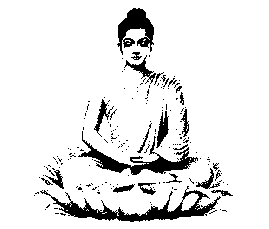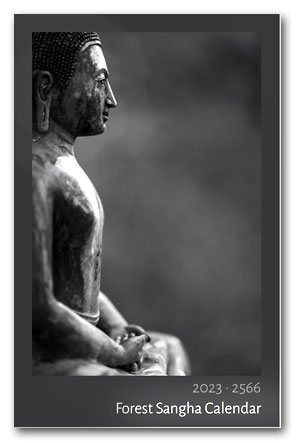Buddhist Festivals and Holidays

There are many special or holy days held throughout the year
by the Buddhist community. Many of these days celebrate the
birthdays of Bodhisattvas in the Mahayana tradition or other
significant dates in the Buddhist calendar. The most significant
celebration happens every May on the night of the full
moon, when Buddhist all over the world celebrate the birth,
enlightenment and death of the Buddha over 2,500 years ago.
It has become to be known as Buddha Day.
Buddhist Festivals are always joyful occasions. Typically on
a festival day, lay people will go the the local temple or monastery
and offer food to the monks and take the Five Precepts and listen
to a Dharma talk. In the afternoon, they distribute food to
the poor to make merit, and in the evening perhaps join in a
ceremony of circumambulation of a stupa three times as a sign
of respect to the Buddha, Dhamma, Sangha. The day will conclude
with evening chanting of the Buddha's teachings and meditation.
* The Thai Buddhist Calendar (similar if not the same as the
Laotian and Cambodian). Some holy days are specific to a particular
Buddhist tradition or ethnic group (as above). There are two
aspects to take into consideration regarding Buddhist festivals:
Most Buddhists, with the exception of the Japanese, use the
Lunar Calendar and the dates of Buddhist festivals vary from
country to country and between Buddhist traditions. There are
many Buddhist festivals, here are some of the more important
ones:
Buddhist New Year
In Theravadin countries, Thailand, Burma, Sri Lanka, Cambodia
and Laos, the new year is celebrated for three days from the
first full moon day in April. In Mahayana countries the new
year starts on the first full moon day in January. However,
the Buddhist New Year depends on the country of origin or ethnic
background of the people. As for example, Chinese, Koreans and
Vietnamese celebrate late January or early February according
to the lunar calendar, whilst the Tibetans usually celebrate
about one month later.
Vesak or Visakah Puja ("Buddha Day")
Traditionally, Buddha's Birthday is known as Vesak or Visakah
Puja (Buddha's Birthday Celebrations). Vesak is the major Buddhist
festival of the year as it celebrates the birth, enlightenment
and death of the Buddha on the one day, the first full moon
day in May, except in a leap year when the festival is held
in June. This celebration is called Vesak being the name of
the month in the Indian calendar.
Magha Puja Day (Fourfold Assembly or "Sangha Day")
Magha Puja Day takes places on the full moon day of the third
lunar month (March). This holy day is observed to commemorate
an important event in the life of the Buddha. This event occurred
early in the Buddha's teaching life.
After the first Rains Retreat (Vassa) at the Deer Park at Sarnath,
the Buddha went to Rajagaha city where 1250 Arahats,(Enlightened
saints) who were the Buddha's disciples, without prior appointment,
returned from their wanderings to pay respect to the Buddha.
They assembled in the Veruvana Monastery with the two chief
disciples of the Buddha, Ven. Sariputta and Ven. Moggalana.
The assembly is called the Fourfold Assembly because it consisted
of four factors: (1) All 1250 were Arahats; (2) All of them
were ordained by the Buddha himself; (3) They assembled by themselves
without any prior call; (4) It was the full moon day of Magha
month (March).
Asalha Puja Day ("Dhamma Day")
Asalha Puja means to pay homage to the Buddha on the full moon
day of the 8th lunar month (approximately July). It commemorates
the Buddha's first teaching: the turning of the wheel of the
Dhamma (Dhammacakkappavattana Sutta) to the five ascetics at
the Deer Park (Sarnath) near Benares city, India. Where Kondanna,
the senior ascetic attained the first level of enlightenment
(the Sotapanna level of mind purity).
Uposatha (Observance Day)
The four monthly holy days which continue to be observed
in Theravada countries - the new moon, full moon, and quarter
moon days. Known in Sri Lanka as Poya Day. [ Web Link: Uposatha
or Observance Days ]
Pavarana Day
This day marks the conclusion of the Rains retreat (vassa).
In the following month, the kathina ceremony is held, during
which the laity gather to make formal offerings of robe cloth
and other requisites to the Sangha.
Kathina Ceremony (Robe offering ceremony)
Is held on any convenient date within one month of the conclusion
of the Vassa Retreat, which is the three month rains retreat
season (Vassa) for the monastic order. It is the time of the
year when new robes and other requisites may be offered by the
laity to the monks.
Anapanasati Day
At the end of one rains retreat (vassa), the Buddha was so pleased
with the progress of the assembled monks that he encouraged
them to extend their retreat for yet another month. On the full-moon
day marking the end of that fourth month of retreat, he presented
his now-famous instructions on mindfulness of breathing (anapanasati),
which may be found in the Anapanasati Sutta (MN 118) - The Discourse
on Mindfulness of Breathing.
Abhidhamma Day
In the Burmese tradition, this day celebrates the occasion when
the Buddha is said to have gone to the Tushita Heaven to teach
his mother the Abhidhamma. It is held on the full moon of the
seventh month of the Burmese lunar year starting in April which
corresponds to the full moon day in October.
Songkran
This Thai Buddhist festival goes on for several days during
the middle of April. People clean their houses and wash their
clothes and enjoy sprinkling perfumed water on the monks, novices
and other people for at least two or three days. They
gather around the riverbank, carrying fishes in jars to put
into the water, for April is so hot in Thailand that the ponds
dry out and the fish would die if not rescued. People go to
the beach or river bank with jars or buckets of water and splash
each other. When everyone is happily wet they are usually entertained
by boat races on the river.
Loy Krathong (Festival of Floating Bowls)
At the end of the Kathin Festival season, when the rivers and
canals are full of water, the Loy Krathong Festival takes place
in all parts of Thailand on the full moon night of the Twelfth
Lunar month. People bring bowls made of leaves (which contain
flowers) candles and incense sticks, and float them in the water.
As they go, all bad luck is suppose to disappear. The traditional
practice of Loy Krathong was meant to pay homage to the holy
footprint of the Buddha on the beach of the Namada River in
India.
The Ploughing Festival
In May, when the moon is half-full, two white oxen pull a gold
painted plough, followed by four girls dressed in white who
scatter rice seeds from gold and silver baskets. This is to
celebrate the Buddha's first moment of enlightenment, which
is said to have happened when the Buddha was seven years old,
when he had gone with his father to watched the ploughing.
(Known in Thailand as Raek Na)
The Elephant Festival
The Buddha used the example of a wild elephant which, when it
is caught, is harnessed to a tame one to train. In the same
way, he said, a person new to Buddhism should have a special
friendship of an older Buddhist. To mark this saying, Thais
hold an elephant festival on the third Saturday in November.
The Festival of the Tooth
Kandy is a beautiful city in Sri Lanka. On a small hill is a
great temple which was especially built to house a relic of
the Buddha - his tooth. The tooth can never be seen, as it is
kept deep inside may caskets. But once a year in August, on
the night of the full moon, there is a special procession for
it.
***
Ulambana
(Ancestor Day)
Is celebrated throughout the Mahayana tradition from the first
to the fifteenth days of the eighth lunar month. It is believed
that the gates of Hell are opened on the first day and the ghosts
may visit the world for fifteen days. Food offerings are made
during this time to relieve the sufferings of these ghosts.
On the fifteenth day, Ulambana or Ancestor Day, people visit
cemeteries to make offerings to the departed ancestors. Many
Theravadins from Cambodia, Laos and Thailand also observe this
festival.
Ulambana is also a Japanese Buddhist festival known as Obon,
beginning on the thirteenth of July and lasting for three days,
which celebrates the reunion of family ancestors with the living.
Avalokitesvara’s
Birthday (Kuan Yin)
This is a festival which celebrates the Bodhisattva ideal represented
by Avalokitesvara. Who represents the perfection of compassion
in the Mahayana traditions of Tibet and China. It occurs on
the full moon day in March.
Bodhi
Day (Enlightenment Day)
Bodhi
Day honours the enlightenment of Siddhartha Gautama -- the Buddha.
Buddhists observe the importance of this event by celebrating
Bodhi Day usually on the eighth of December. The day is observed
in many ways, including prayer, meditation and teachings.
Thanks to BuddhaNet.net

2023 Buddhist
Calendar
Free Download /
Click Here
***
- A Printable (PDF) Buddhist Wall Calendar for 2023 -
The Forest Sangha Community - www.forestsangha.org
|